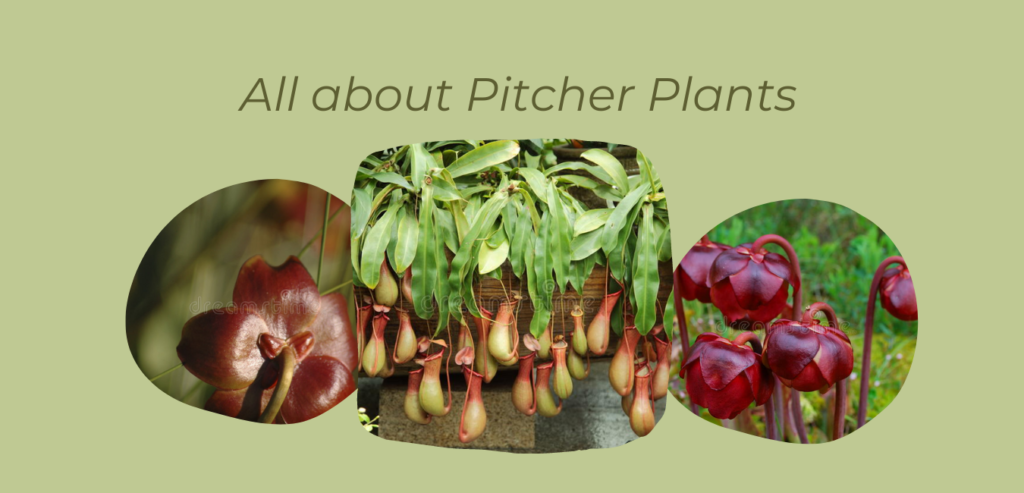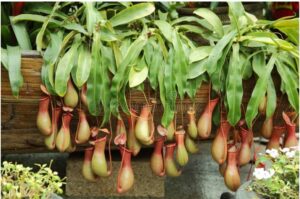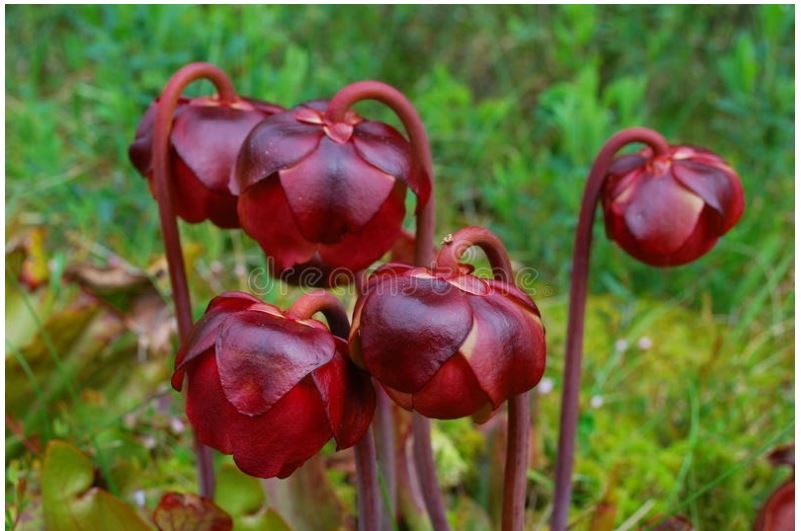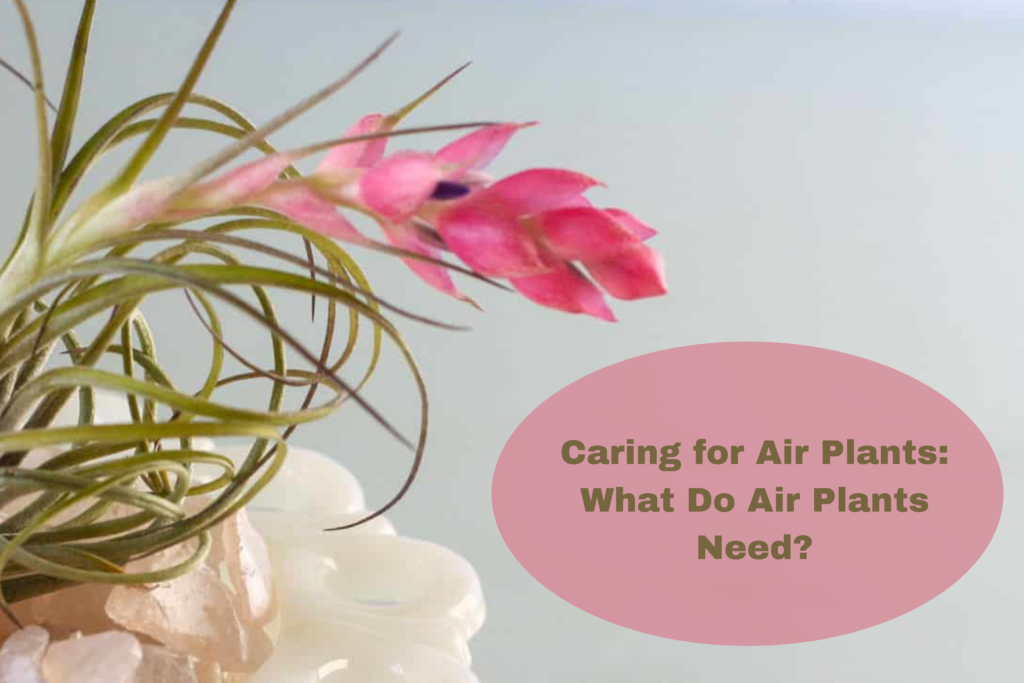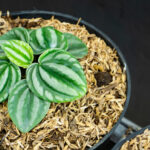HousePlantJoy is supported by our audience. When you purchase through one of our links, we may earn a small affiliate commission. As an Amazon Associate I earn from qualifying purchases. Your cost is not affected.
==================
All About Pitcher Plants
Have you ever considered keeping one or more pitcher plants in your home? Doesn’t it seem interesting? Today we will provide you with a comprehensive guide on cultivating and caring for Tropical Pitcher Plants.
We’ll go through how to grow and feed Tropical Pitcher Plants. Furthermore, we will discuss ideal temperatures and humidity levels, address various additional concerns, and care for a Venus Flytrap. Then we’ll go through how to grow a Pitcher plant, be it in a greenhouse, indoors, or outdoors.
But what exactly is a Pitcher Plant?
Pitcher Plants are carnivorous plants originating from eastern North America. They are sometimes known as Sarracenia or Trumpet Pitchers. They may be long-lived, easy-to-grow houseplants that maintain their appearance from year to year. However, they become complicated and short-lived too.
The southeastern United States, from Florida through Missouri and North Carolina/Virginia, are home to most of the American pitcher plant. You can find one species further north along the east coast and into Canada, although they are primarily seen in the southern states. They thrive in marshes and swamps with plenty of light.
The real kicker is that they are quite adaptable to the indoor environment. They are tropical plants that necessitate heat and high humidity, so if you live anywhere in America with those circumstances, you’ll have no trouble growing them; plus, they’re stunning.
Continue reading to discover the fundamentals of growing pitcher plants as houseplants and caring for pitcher plants inside.
How to Take Care of a Pitcher Plant
We won’t try and pretend they’re easy houseplants to have around, but with a few slight changes to how you’d treat and care for a “regular” indoor plant, you can have a healthy Pitcher Plant indoors without too much trouble.
So, what makes them such terrific houseplants? They are unmistakably niche plants that do not appeal to everyone; they have a highly carnivorous and “alive” appearance, with many kinds having blood-red vein patterns on the pitchers.
- Light
Pitcher plants can’t seem to get enough of the sun. For them to form and develop properly during the development season (April to October), your Pitcher Plant needs full sun or, at the very least, extremely bright light.
If you’re not sure what type you have, place your plant in moderate to bright light and keep it out of direct sunlight. Transfer the plant to a low-light setting if the leaves become yellow, or the leaf edges seem brown or burned.
- Watering
Water pitcher plants as needed to keep the potting soil wet but not damp while growing them indoors. Keep it constantly wet; do not allow it to dry out and use the proper sort of water; carnivorous plants require acidic water, and using neutral or alkaline water for extended periods can kill your plant.
Let the pot drain completely after watering, and never leave it submerged in water since moist soil might cause the plant to rot. Above all, pitcher plants are sensitive to the toxins in tap water and benefit tremendously from distilled or rainwater.
- Humidity
If the Pitcher plant is properly irrigated, there should be a continual flow of moisture around the plant, which will supply a natural boost to the surrounding humidity levels. Warm temperatures ranging from 65 to 80 degrees Fahrenheit are generally required for indoor pitcher plant maintenance (18-27 C.) In this scenario, you need to increase the humidity level to protect the pitcher tips from becoming crispy.
- Potting Soil
Unless the container you’re starting with is relatively small, you seldom need to re-pot a Sarracenia into a larger pot. Consider potting once every 2 to 3 years as a starting point. This is basically to refresh the growth medium to ensure it holds water properly and remove any mineral buildup over time.
- Feeding
Pitcher plants do not require additional fertilizer, but you may spray them with a very diluted fertilizer solution (no more than 14 to 12 teaspoon per gallon (2 ml.-4 L.) during the spring and summer, using a water-soluble fertilizer intended for bromeliads or orchids.
They have evolved to capture insects because they are experts at dealing with nutrient-deficient conditions. As a result, you should not give fertilizer because it creates its own by catching and digesting “prey.”
How to Feed a Pitcher Plant
Is it critical that I feed my carnivorous plants?
If carnivorous plants were activists, their protest signs would probably look like this:
- We’re more than just what we eat!
- Also, we’re green, nasty, and easily noticed!
- We’re not here to amuse you!
As much as we like the novelty, carnivorous plants have other needs that exceed their urge to catch and consume insects. Carnivorous plants, like people, need healthy, supportive growth circumstances before they can effectively catch, devour, and feed their prey. Pitcher plants and Venus flytraps require clean water, particular soil, adequate sunshine, and an annual hibernation period as a priority above feeding.
How to Care for Venus Fly Trap Indoors
Have you ever played the game “Plants Vs. Zombies” and wondered how it feels to have at least one of those fantastic plants in your home? Worry no more because we got you!
Venus flytraps are becoming increasingly popular as houseplants. This small-statured meat-carnivorous feeder’s nature and jaw-like traps make it an intriguing addition to any plant-loving home. They can be grown in pots using a particular potting soil mix, but as every plant parent knows, your Venus Flytrap will eventually need to leave the pot and find its own home.
You should satisfy a few critical variables for a Venus Flytrap to survive and thrive. They are native to the southeast United States, and you can find them in bogs and along stream banks. In the San Francisco Bay Area, you can grow outdoors all year. They prefer acidic soil, lots of sunshine and humidity, extremely pure water, and growing outdoors.
Listed below are the things you need to take note in taking care of a Venus Flytrap.
- Soil
Your Venus Flytrap may be grown in a 50:50 mixture of peat moss and perlite. Other growers have claimed success with pure peat moss, although the aeration provided by perlite is preferable, and the soil must be acidic and capable of storing moisture. They thrive when repotted (during dormancy) every two years, although you can go longer replant it.
- Water
Venus Flytraps cannot dry up and will die if they do. For the most part, you may use the tray approach, which involves soaking them in 1–2′′ of water and then allowing them to dry or almost dry before watering again. This keeps the pot wet/moist at all times while also providing oxygen to the roots.
Both the water and the soil must have low Total Dissolved Solids levels (TDS). The roots are pretty sensitive, and if there are too many minerals in the water, the plant will perish. If the quality of your water is so poor, you may want to consider filtered water.
- Light
They want full sun and dislike a lot of shade. Some plants will become red in intense light, but not all.
- Temperature
Venus Flytraps may be grown successfully at temperatures ranging from 28 to 110 degrees Fahrenheit. They tend to grow best at temps in the 80s and 90s, but they also do well when temperatures change naturally.
- Fertilization/Feeding
Over-fertilization will harm a plant, and because the roots are so sensitive, it is very simple to over-fertilize. Some growers would feed bugs to their plants, which you may do, but they will catch food on their own when grown outside.
- Humidity
Venus Flytraps prefer humidity and will thrive in high humidity environments; however, this is not mandatory. Your microclimate could also be really low in humidity, and they will grow well, but whatever you can do to increase the moisture in the surrounding region will help the plants thrive.
In Conclusion
Your carnivorous plants seek your support to survive in this vast wide world. Now that you understand the fundamentals, you can go to work, ensuring that your carnivore friends have the best chance of living a long and happy life in your care. We hope that you learned all about pitcher plants. Let us know your thought on the comments.
Read More:
Roses as Houseplants – Grow Roses Indoors
Natural Fertilizers For Houseplants- Top 10
Plants for the House and Patio That Bugs Don’t Like
PITCHER PLANT: Overview, Uses, Side Effects, Precautions(webmd.com)

